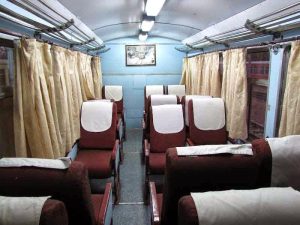
Indian Railways, a vital lifeline of transportation in India, has been continually modernizing its services to meet the evolving demands of passengers. One such significant advancement is the introduction of the M1 coach, also known as the AC III Tier Economy coach. This coach represents a blend of economy and luxury, tailored to enhance the travel experience while maintaining affordability. Here, we delve into the details of what the M1 coach is, its features, benefits, and its place within the broader context of Indian Railways’ modernization efforts.
the M1 Coach
The M1 coach, introduced relatively recently, is designed to offer an economical yet comfortable travel option for passengers. It falls under the AC III tier category but with a twist aimed at maximizing capacity and comfort:
Capacity: Unlike the standard AC III tier coach with 72 berths, the M1 coach accommodates 83 berths. This increase in capacity is achieved by optimizing the space without compromising comfort significantly.
Layout: The coach features a 2-lower, 2-middle, and 2-upper berth arrangement along with side berths (lower and upper). This setup ensures that more passengers can travel in an air-conditioned environment without the usual congestion found in non-AC coaches.
Amenities: The M1 coach includes amenities like individual reading lights, charging points for electronic devices, and improved ventilation systems. The seats are designed ergonomically, offering more legroom than traditional coaches, making long journeys less fatiguing.
Advantages of the M1 Coach
Cost-Effectiveness: The fare structure for the M1 coach is positioned to be more affordable than the standard AC III tier while providing similar comfort levels. This makes air-conditioned travel accessible to a larger segment of the population.
Increased Comfort: Despite the higher number of berths, the design ensures each passenger has adequate space. Features like adjustable headrests and better seat positioning add to the comfort factor, particularly beneficial for overnight travel.
Safety and Hygiene: With fewer passengers per coach compared to non-AC options, the M1 coach allows for better maintenance of hygiene. The air conditioning system also reduces dust and pollution exposure, enhancing the travel experience.
Integration into the Indian Railway Network
Train Types: The M1 coaches are integrated into various types of trains, including express and superfast trains. This integration is part of Indian Railways’ broader strategy to upgrade its fleet across different service levels, from Rajdhani and Duronto to regular passenger trains.
Route Coverage: Initially, these coaches are being introduced on select routes like the Prayagraj-Jaipur Express, with plans for expansion based on passenger feedback and demand.
Strategic Importance: By introducing M1 coaches, Indian Railways aims to reduce the waiting list on popular routes, improve passenger turnover, and increase revenue through a higher number of passengers per train journey.
Passenger Feedback and Experience
Passenger feedback has been instrumental in shaping the rollout of M1 coaches. While many appreciate the balance of cost and comfort, there are concerns regarding the potential for overcrowding due to higher berth counts. Indian Railways has responded by ensuring strict controls on ticket sales to maintain the quality of service.
User Experience: Travelers have noted the better sleep quality due to the design of the berths and the quieter, cleaner environment of an AC coach. However, some long-term passengers miss the community feel of the more crowded, non-AC trains, where interactions are more frequent.
Future Improvements: Based on feedback, there’s ongoing work to enhance amenities like better food services, more charging points, and perhaps even Wi-Fi connectivity in these coaches.
The Broader Context of Modernization
The introduction of the M1 coach is just one piece of the puzzle in the vast modernization efforts by Indian Railways:
Electrification: A significant portion of the rail network has been electrified, reducing reliance on diesel and improving efficiency.
High-Speed and Luxury Trains: Alongside economy options like the M1, there are developments in high-speed rail and luxury travel options like the Vande Bharat Express, catering to different segments of the travel market.
Infrastructure Upgrades: Stations are being revamped, new lines are being laid, and there’s a push towards better signaling and safety systems.
Conclusion
The M1 coach represents a thoughtful evolution in the Indian Railways’ approach to passenger comfort, capacity, and cost. It’s part of a larger narrative where rail travel in India isn’t just about getting from point A to B but about doing so in a way that’s increasingly comfortable, safe, and accessible. As Indian Railways continues to evolve, the M1 coach stands as a testament to their commitment to passenger satisfaction and operational efficiency, signaling a bright future for rail travel in one of the world’s largest rail networks.

Leave a Reply